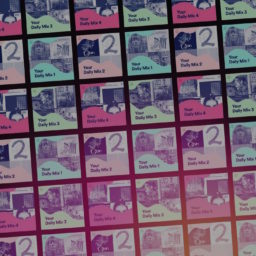Laziness is good. It teaches us to get results with the least effort possible. If you avoid procrastinative behaviour, laziness can even be a great recipe for success, because you’ll be a master at shortcuts and finding the most effective ways to get things done.
I, like everyone, can be pretty lazy at times and it can take a lot of motivation to muster up the motivation for some activities. Over the years, I’ve learned that the strongest motivators for me are either:
- Instant gratification, eg. the dopamine triggers created by most time wasting activities and procrastination;
- Having a purpose beyond what I’m doing.
This year I set up the MUSIC x TECH x FUTURE newsletter as a way to ‘force’ myself to write something every week. Prior to that, I had ‘created’ (written) articles mostly sporadically, but now I had a weekly deadline. And I had a vision: I knew that MxTxF was something I wanted to grow, to build, and hold to a high standard. All creation happened within that context.
Creation for the sake of creation is great.
But if you’re striving to achieve something, then the path of random creations is one where you’ll depend on luck and pure chance.

So whether you make music, work at a label, or aren’t doing anything creative – ask yourself: what could I be building?
Start from doing what you’re already doing.
- Why are you doing it?
- What are you learning from it?
- Does it all fit together?
- Does your work add up?
If the answer to the last question is no, that’s fine. If you make coffee for customers every day, then every day will look more or less the same, and every morning you hit the reset button and do it again. Same day, repeating, with the same results. Whether you fail or succeed in that case depends on consistent performance and random external factors.
The lazy person’s nightmare.

If that sounds like you, think about what you could do that adds up. Then wrap it in purpose.
Back to the coffee example. Let’s say your wrapping in purpose is that you want to become the best coffee place in your town. Now you have a context to fill. You’ll need to talk to your boss and make a plan, you need to figure out what makes a place great, talk to your customers, etc. All of this you can do while doing what you’re already doing.
The lazy person’s dream.
Now let’s look at music.
Stop expecting to get a lucky break. The word luck implies unlikeliness and when you work hard and never get lucky, it can become intensely demotivating.
Create to build.
You’re building a following.
You’re building a fanbase.
You’re building your artist brand.
Every time you release music, it’s a step in building those things.

In that context, you can evaluate your steps.
For instance, 2 times this year, the open rate of my newsletters dropped below 30%. Terrible, because I strive to keep it between 40-50% (higher would be nice, too). In the context of building something, a low open rate is terrible: if you can’t win people’s attention consistently, then you’ll lose it eventually.
So I looked at what I did.
In one case, it was just the subject line that was a bit too pushy and may have caused people to auto-ignore the email, thinking it’s yet another spammy newsletter.
The other case was more difficult, but my hypothesis was that the edition the week before was a bit weaker than usual, so people didn’t open it the week after. I didn’t have a good way to know this for sure, but it gave me a new way to think about what I’m building.
What that means is that by placing my creations in the context of something I’m building, it forced me to zoom out and think more carefully about the greater picture.
You may assume people are not watching your new video, because you posted it on your Facebook at the wrong time of the day, but maybe it’s because your last video sucked. If you’re just pushing out creations without thinking about the greater context you’re building, you’ll miss that information.
The value in creating consistently and feeding it into something you can grow is so much greater than the sum of parts. So don’t just create; build.
Best of all, it’s a great way to justify laziness. Just don’t procrastinate.










